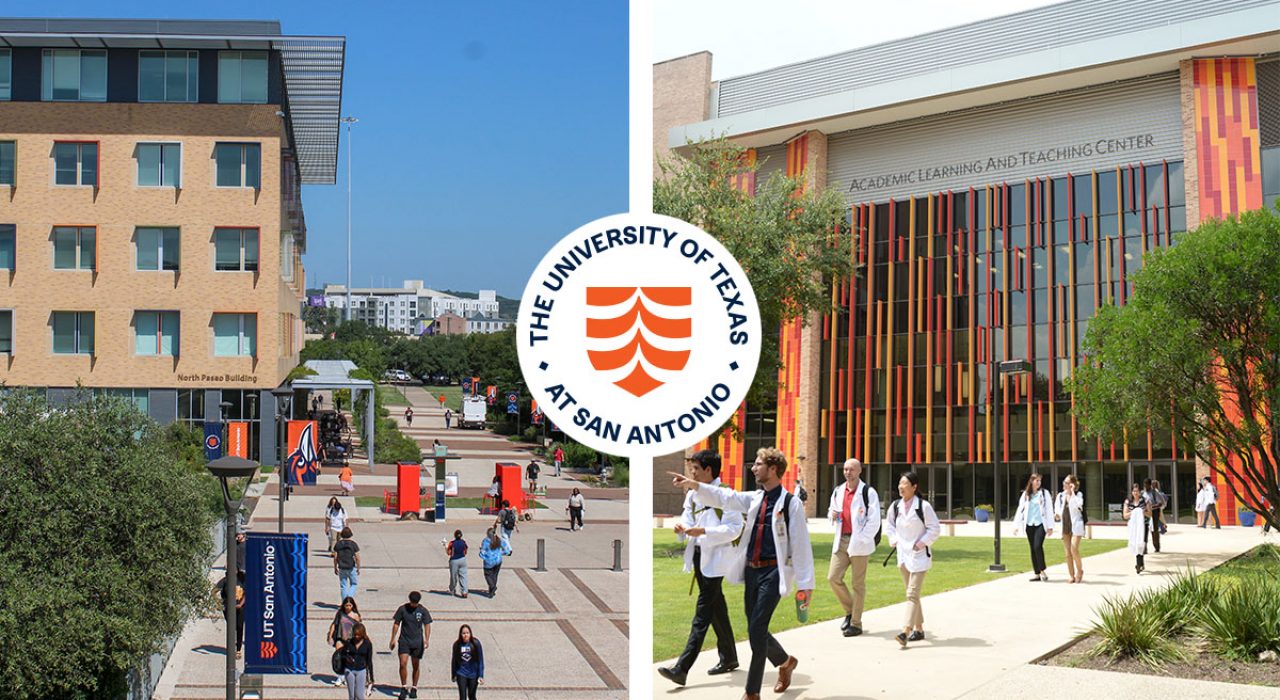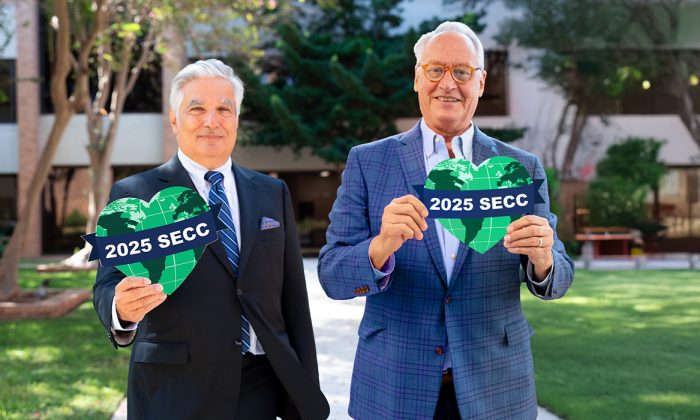The University of Texas at San Antonio has reached a significant milestone in its merger journey.
On Thursday, the Southern Association of Colleges and Schools Commission on Colleges (SACSCOC) affirmed the verification of UT San Antonio’s continued compliance with rigorous accreditation standards as a merged university, marking a significant milestone in UT San Antonio’s integration journey.
The university merged with UT Health Science Center San Antonio in September, combining two superb institutions to form a new transformational university that now ranks as the third-largest public research university in Texas.
SACSCOC, the accrediting body that ensures the quality and integrity of institutions that award degrees in higher education, officially approved the merger in June.
On Tuesday and Wednesday, the accrediting organization’s substantive change site visit team visited the academic campuses — including Main Campus, Downtown Campus and San Pedro I — the Health Science Center Campus, and one of the institution’s off-campus instructional sites, Sunshine Cottage School for Deaf Children, to meet with students, faculty, staff and administrators.
Following those meetings, the reviewers affirmed that, UT San Antonio, as a new institution, remains in compliance with all accreditation standards.
“Today’s affirmation of accreditation marks a critical milestone in our university’s journey toward becoming a preeminent national, public-serving research university, as it acknowledges our collective commitment to excellence in academics, research and innovation and healthcare, while laying the foundation of our new and nimble university that will serve generations of students to come,” said UT San Antonio President Taylor Eighmy.
“I’m immensely grateful to the members of our President’s Cabinet and the leads and members of our SACSCOC Accreditation Task Force whose incredible work resulted in the successful submission of the prospectus and substantive change committee report and committee site visit,” he said.
SACSCOC is the accrediting body that ensures the quality and integrity of institutions that award degrees in higher education.
As a trusted authority, SACSCOC serves as the common denominator of shared values and practices for its member institutions across the United States and approved international sites. Its rigorous standards support continuous improvement and help safeguard the value of the degrees we award.
“This important accomplishment reinforces the strength of our academic foundation and the shared purpose driving our integration,” said Heather Shipley, provost and senior executive vice president for Academic Affairs.
“Every day, our UT San Antonio faculty and staff empower students through discovery and real-world learning, preparing graduates to take on society’s greatest challenges,” Shipley said. “This affirmation marks a defining step forward for our university, confirming the quality of our academic enterprise, the transformative impact of our collective work and our continued progress toward becoming a world-class public research university.”
“Our faculty and staff are shaping a university where discovery, innovation, and learning converge with purpose,” said Francisco Cigarroa, MD, senior executive vice president of health affairs and health system for the university. “Together, we are preparing graduates who will advance health, knowledge, and opportunity — individuals ready to confront society’s most complex challenges. This commitment to scholarly excellence and human impact propels UT San Antonio toward its vision of becoming a world-class public research university.”
Accreditation serves to assure the educational quality and improve the effectiveness of higher education, according to the commission’s website. SACSCOC accreditation ensures that institutions of higher education demonstrate the resources, programs, and services necessary to accomplish and sustain their mission; clearly define educational objectives that align with that mission and the degrees they offer; and effectively assess and improve their success in achieving those objectives.
Accredited institutions must demonstrate compliance with the standards for accreditation as outlined in The Principles of Accreditation: Foundations for Quality Enhancement, as well as the policies and procedures of the Commission.



